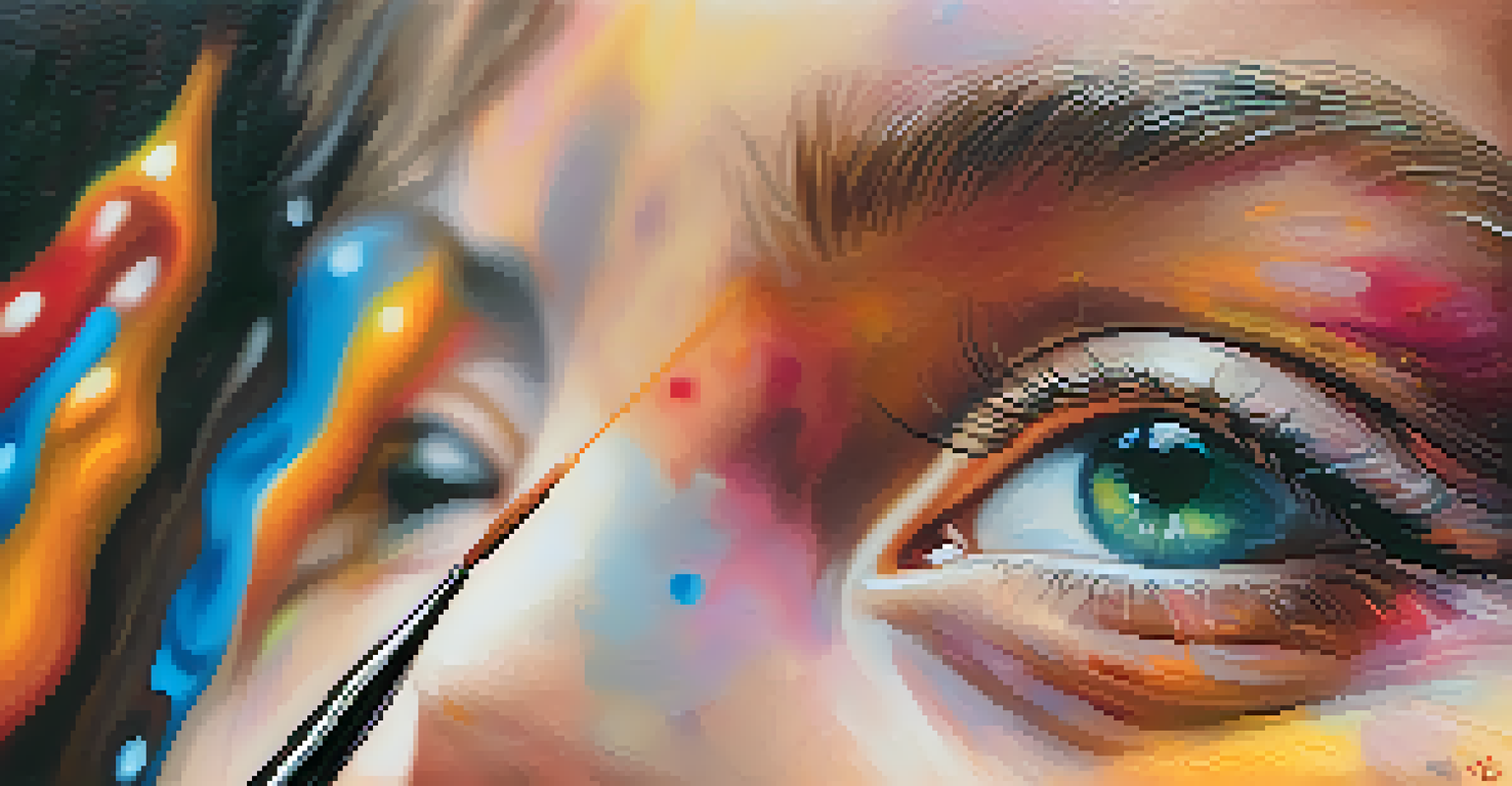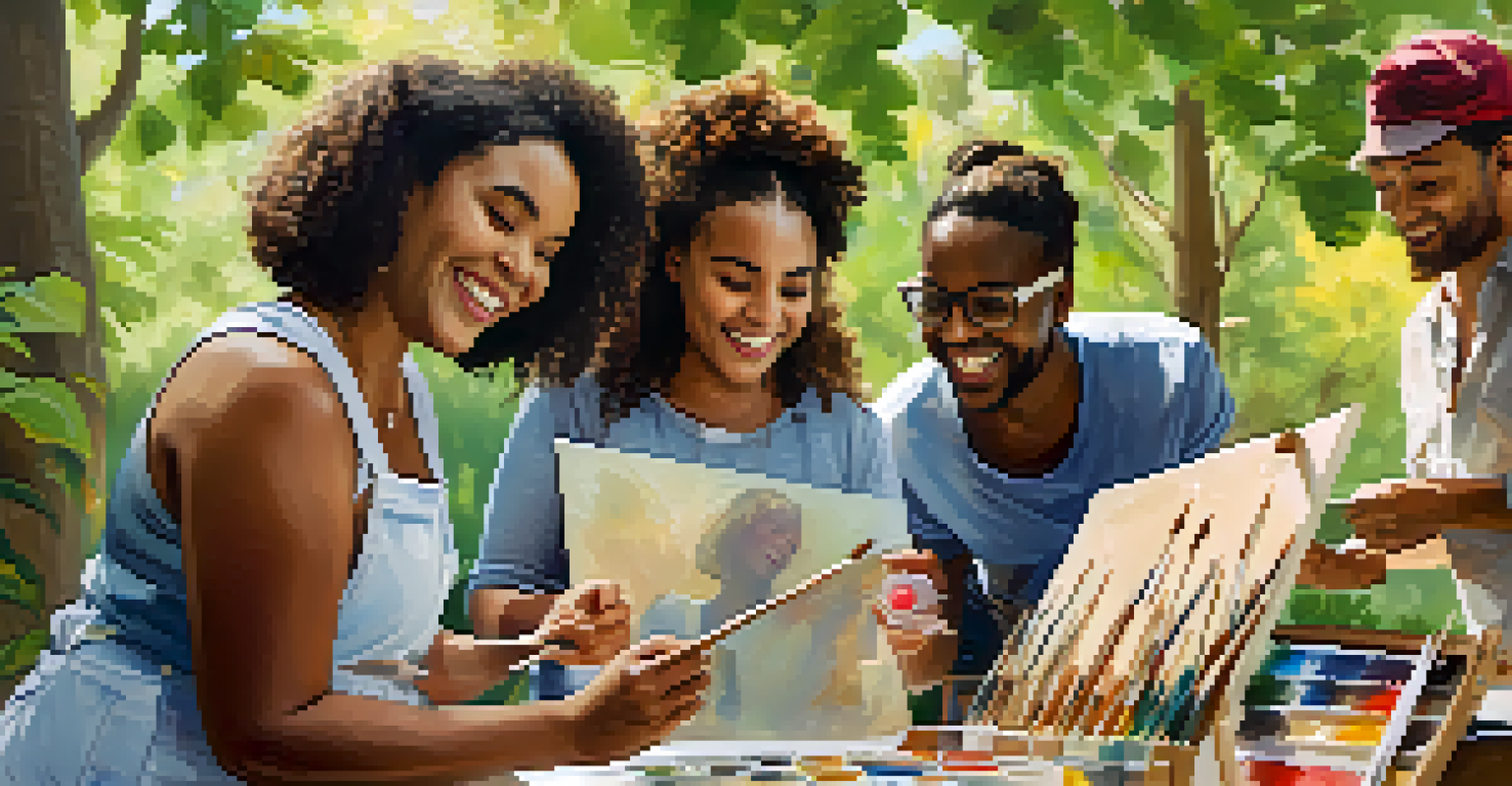Exploring the Intersection of Art and Mental Health Resilience

Understanding Mental Health Resilience in Today's World
Mental health resilience refers to our ability to adapt and bounce back from stress. In a world filled with challenges, cultivating this resilience is essential for overall well-being. It's not just about surviving tough times but thriving despite them, and this is where creative outlets like art come into play.
Art is the most beautiful of all lies.
When we engage in artistic activities, whether painting, music, or writing, we often tap into deeper emotions and experiences. This process can be cathartic, providing a space for expression that might be hard to achieve through words alone. By exploring our feelings through art, we learn to process and manage them more effectively.
Moreover, resilience isn’t a fixed trait; it can be developed over time. Art offers a unique way to build this resilience, encouraging individuals to confront their experiences while fostering a sense of community and support. In this way, art becomes both a personal journey and a shared experience.
The Therapeutic Benefits of Creative Expression
Engaging in creative expression can have profound therapeutic benefits. Studies have shown that activities like painting or songwriting can lower anxiety and improve mood. This isn't just anecdotal; research supports that creating art can stimulate the release of dopamine, the 'feel-good' neurotransmitter.

Art therapy, a structured form of creative expression guided by a professional, has gained recognition for helping individuals cope with various mental health issues. It allows individuals to explore their emotions in a safe environment, providing insights that might be difficult to articulate otherwise. This process of creation can lead to healing and personal growth.
Art Enhances Mental Health Resilience
Engaging in artistic activities helps individuals process emotions, fostering resilience and promoting overall well-being.
Furthermore, the act of creating something tangible can instill a sense of accomplishment and boost self-esteem. When individuals see their ideas take shape, it reinforces their ability to overcome challenges, nurturing a more resilient mindset over time.
Art as a Means of Connection and Community
Art has a unique ability to bring people together, fostering connections that can be vital for mental health. Community art projects, workshops, and exhibitions often create a sense of belonging among participants. This social interaction can combat feelings of isolation, which is particularly important for those struggling with mental health challenges.
Creativity takes courage.
When individuals share their artistic creations, they open doors to conversations about emotions and experiences. This shared vulnerability can strengthen relationships and build a support network, reminding us that we are not alone in our struggles. The simple act of sharing art can be a powerful catalyst for connection.
Moreover, these communal experiences can cultivate understanding and empathy within communities. By witnessing the stories behind each piece of art, people can gain insights into different perspectives, enhancing emotional resilience not just for themselves, but for the community as a whole.
Using Art to Cope with Trauma and Stress
Art can serve as a powerful tool for coping with trauma and stress. Many individuals find solace in creating art when faced with overwhelming emotions. It allows them to process their experiences visually or audibly, creating a sense of control in situations where they may feel powerless.
For instance, someone who has experienced trauma might channel their feelings into a painting that reflects their journey. This act not only aids in emotional release but also helps in reshaping their narrative, transforming pain into something that can be shared and understood.
Creative Expression as Therapy
Art therapy provides a safe space for emotional exploration, leading to healing and personal growth.
Additionally, art can provide a distraction from stressors, offering a temporary respite that allows individuals to recharge. Engaging in a creative process can shift focus away from distressing thoughts, promoting a more positive mental state.
Incorporating Art into Daily Routines for Resilience
Incorporating art into daily routines doesn’t require a formal background or extensive training. Even simple activities like doodling, coloring, or journaling can be beneficial. Making time for these creative outlets encourages self-reflection and emotional expression, which are key components of building resilience.
Establishing a routine that includes artistic activities can create a sense of stability and predictability, essential for mental well-being. Whether it’s dedicating a few minutes each day to sketch or playing an instrument, these moments of creativity can serve as a sanctuary from daily stress.
Furthermore, the process of engaging in art becomes a mindfulness practice. By focusing on the act of creation, individuals can cultivate present-moment awareness, helping them manage anxiety and fostering a deeper connection to their emotions.
The Role of Digital Art in Mental Health Resilience
In today's digital age, art has taken on new forms, from digital painting to online music production. Digital art provides accessible avenues for creative expression, allowing individuals to explore their artistic talents without the constraints of traditional mediums. This accessibility can be particularly empowering for those who may feel intimidated by conventional art forms.
Many digital platforms also foster community engagement, connecting artists and audiences globally. This online interaction can provide support and encouragement, enhancing resilience through shared experiences and feedback. Virtual galleries and social media can be powerful tools for showcasing talent and finding connection.
Digital Art Fosters Community Support
Digital art platforms enable global connections, enhancing resilience through shared experiences and feedback.
Additionally, the flexibility of digital art means that individuals can create anytime and anywhere. This adaptability makes it easier to incorporate creative expression into busy lives, ensuring that the benefits of art are always within reach, regardless of one’s circumstances.
Encouraging Art Initiatives in Mental Health Settings
Integrating art initiatives into mental health settings can yield significant benefits for patients. Art programs can provide a therapeutic outlet and enhance the overall treatment experience. By offering creative workshops, mental health facilities can foster a supportive environment that encourages emotional growth.
These initiatives not only benefit individuals undergoing treatment but can also promote collaboration among staff and patients. Art can serve as a bridge for communication, allowing for shared experiences that enhance understanding and empathy in therapeutic relationships.

Furthermore, showcasing patients' artwork can empower individuals, giving them a voice in their healing journey. Celebrating their creativity can instill a sense of pride and accomplishment, reinforcing the belief that they can overcome challenges and thrive.